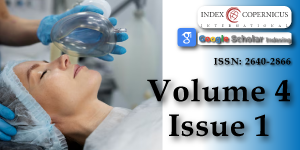The choice of optimal modern muscle relaxants (rocuronium bromide, atracurium besilate and cisatracurius besilate) in one-day surgery in children
Main Article Content
Abstract
The choice of the optimal muscle relaxant in one-day surgery in children with “small” surgical interventions remains relevant to this day. In modern pediatric surgery, the requirements for the quality of muscle relaxation are highest. However, along with the effectiveness of the drug, its duration and controllability of the action, as well as the safety of use, are important [1-7].
The aim of the study: To determine the pharmacoeconomic rationale for the rational use of muscle relaxants, depending on the duration of operations in one-day surgery in children.
Material and research methods: The study was conducted in surgical clinics of the Azerbaijan Medical University. The study included 156 children who were operated on routinely from 0 to 16 years old (risk of anesthesia I-II ASA), who used combined endotracheal anesthesia during surgery. Based on the requirements of the GCP international program (Good Clinical Practice), the inclusion of children in the study was carried out only after the written consent of the parents. The studied patients were divided into 3 groups depending on the muscle relaxant used: IA (n = 52) - rocuronium bromide (esmeron), IB (n = 52) - atracurium besilate (tracrium), IC (n = 52) - cisatracurius besilate (nimbex). Depending on the type of general anesthesia, these groups were also divided into 2 subgroups: anesthesia based on isoflurane + fentanyl ″ + iso ″ and anesthesia based on sevoflurane + fentanyl ″ + sev ″. The main groups were also divided into 2 age subgroups: children under 2 years of age – IA1, IB1, IC1 and children from 2 to 16 years old – IA2, IB2, IC2.
Article Details
Copyright (c) 2020 Nasibova EM.

This work is licensed under a Creative Commons Attribution 4.0 International License.
Ali MZ, Ebied RS, Atallah MA, El Sabea HHA, El Monaemb AA, et al. Cisatracurium dose-response relationship in patients with chronic liver disease. Egy J Anaesthe. 2014; 30: 197-202.
Alonso A, De Boer H, Booij L. Reversal of rocuronium-induced neuromuscular block by sugammadex in neonates. Eur J Anaesthesiol. 2014; 31: 163
Bhananker SM, Treggiari MM, Sellers BA, Cain KC, Ramaiah R, et al. Comparison of train-of-four count by anesthesia providers versus TOF-Watch SX: a prospective cohort study. Can J Anesth. 2015; 62: 1089-1096. PubMed: https://www.ncbi.nlm.nih.gov/pubmed/26224034
El-Kasaby M, Atef H, Helmy A, Abo El-Nas M. Cisatracurium in different doses versus atracurium during general anesthesia for abdominal surgery. Saudi J Anaesth. 2010; 4: 152-157. PubMed: https://pubmed.ncbi.nlm.nih.gov/21189851
Kendrick J, Carr R, Ensom M. Pharmacokinetics and drug dosing in obese children. J Pediatr Pharmacol Ther. 2010; 15: 94-109. PubMed: https://www.ncbi.nlm.nih.gov/pmc/articles/PMC3018176/
Meretoja O. Neuromuscular block and current treatment strategies for its reversal in children. Paediatr Anaesth. 2010; 20: 591-604. PubMed: https://pubmed.ncbi.nlm.nih.gov/20642658
Mohamed N, Cynthia A. Lien: pharmacology of muscle relaxants and their antagonists chapter 29 / Ronald D. Miller’s Anaesthesia. Churchill Livingston. 2010: 868-890.
Movafeghetal A. Cost analysis and safety comparison of Cisatracurium and Atracurium in patientsundergoing general anesthesia. European Review for Medical and Pharmacological Sciences. 2013; 17: 447-450. PubMed: https://pubmed.ncbi.nlm.nih.gov/23467941
Naguib M. Neuromuscular blocking drugs and reversal agents / In: Flood P, Rathmell J, Shafer S. eds. Stoelting’s Pharmacology & Physiology in Anesthestic Practice. 5th ed. Philadelphia, PA: Wolters Kluwer Health. 2015: 323-344.
Plaud B, Meretoja O, Hofmockel R, Raft J, Stoddart PA, et al. Reversal of rocuronium-induced neuromuscular blockade with sugammadex in pediatric and adult surgical patients. Anesthesiology. 2009; 110: 284-294. PubMed: https://pubmed.ncbi.nlm.nih.gov/19194156
Shang G, Wang N, Qing Q, Jun G. Clinical pharmacology of cisatracurium during nitrous oxide-propofol anesthesia in children. J Clin Anesthe. 2008; 20: 411-414.
Thilen S, Bhananker S. Qualitative neuromuscular monitoring: how to optimize the use of a peripheral nerve stimulator to reduce the risk of residual neuromuscular blockade. Curr Anesthesiol Rep. 2016; 6: 164-169. PubMed: https://www.ncbi.nlm.nih.gov/pmc/articles/PMC4963456/
Todd M, Hindman B. The implementation of quantitative electromyographic neuromuscular monitoring in an academic anesthesia department: Follow-up observations. Anesth Analg. 2015; 121: 836-838. PubMed: https://www.ncbi.nlm.nih.gov/pubmed/26287308
Zuche H, Morinello E, Viestenz A, Fiorentzis M, Seitz B et al. Reduction of intraocular pressure and ocular pulse amplitude during general anesthesia. Ophthalmology. 2015; 112: 764–769. PubMed: https://www.ncbi.nlm.nih.gov/pubmed/25510627
M. J. Murray, H. DeBlock, B. Erstad, Gray AW Jr, Jacobi J, et al. Clinical practice guidelines for sustained neuromuscular blockade in the adult critically ill patient. Crit Care Med. 2016; 44: 2079–2103. PubMed: https://www.ncbi.nlm.nih.gov/pubmed/28069681
Moss M, Huang DT, Brower RG, Ferguson ND, Ginde AA, et al. Early neuromuscular blockade in the acute respiratory distress syndrome. New Engl J Med. 2019; 380: 1997–2008. PubMed: https://pubmed.ncbi.nlm.nih.gov/31112383/
Bouju P, Tadie JM, Barbarot N, Letheulle J, Uhel F, et al. Clinical assessment and train-of-four measurements in critically ill patients treated with recommended doses of cisatracurium or atracurium for neuromuscular blockade: a prospective descriptive study. Ann Intensive Care. 2017; 7: 10. PubMed: https://www.ncbi.nlm.nih.gov/pmc/articles/PMC5247382/
Warr J, Thiboutot Z, Rose L, Mehta S, Burry JD, et al. Current therapeutic uses, pharmacology, and clinical considerations of neuromuscular blocking agents for critically ill adults. Ann Pharmacother. 2011; 45: 1116-1126. PubMed: https://www.ncbi.nlm.nih.gov/pubmed/21828347
Lundstrøm LH, Duez CH, Nørskov AK, Rosenstock CV, Thomsen JL, et al. Avoidance versus use of neuromuscular blocking agents for improving conditions during tracheal intubation or direct laryngoscopy in adults and adolescents. The Cochrane database of systematic reviews. 2017. PubMed: https://www.ncbi.nlm.nih.gov/pubmed/28513831
Palsen S, Wu A, Beutler SS, Gimlich R, Yang HK, et al. Investigation of intraoperative dosing patterns of neuromuscular blocking agents. J Clin Monitoring Computing. 2018. PubMed: https://www.ncbi.nlm.nih.gov/pubmed/30094585

